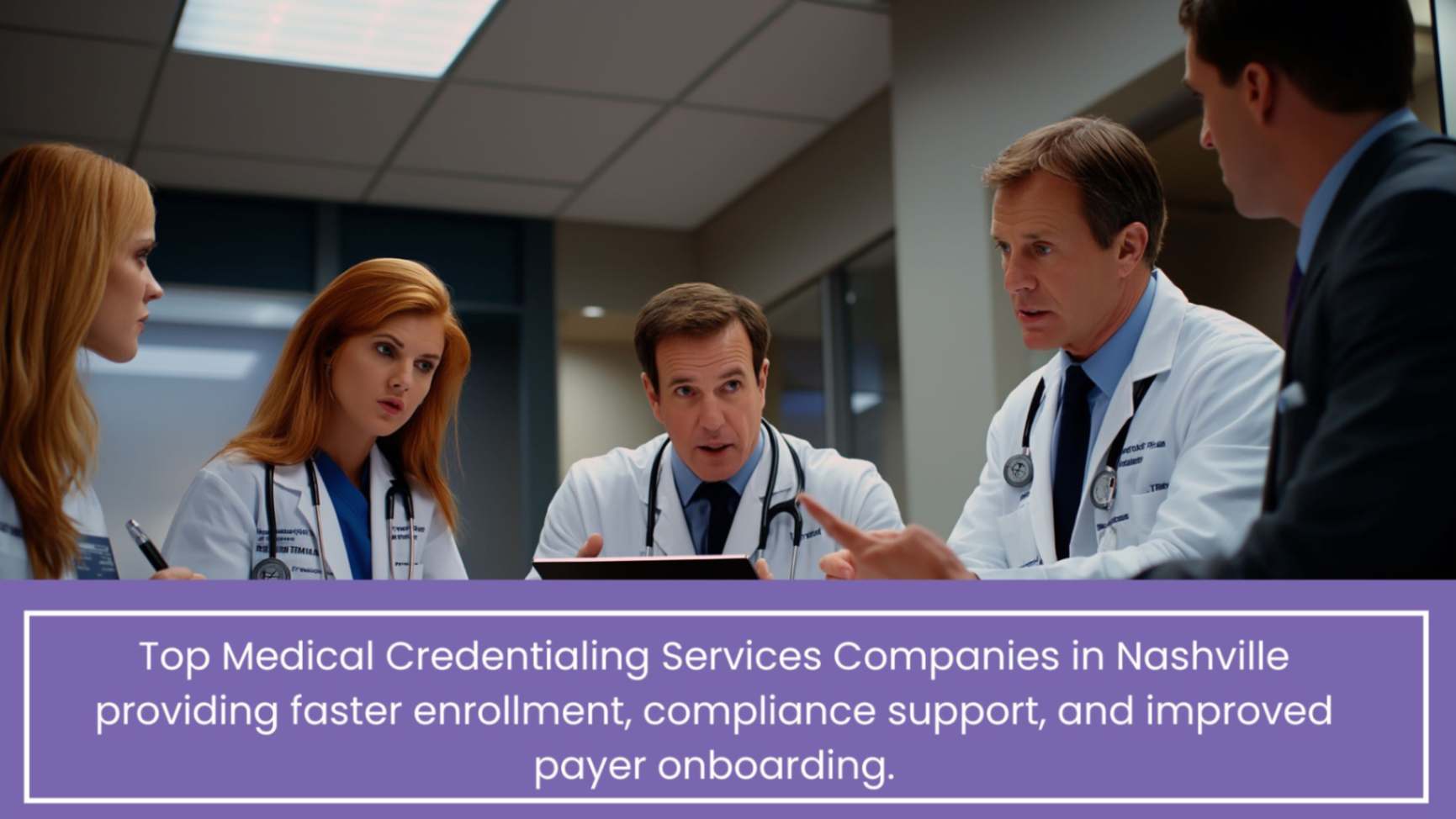In-House vs Outsourced RCM Cost Benefit Guide
Finding the right choice between in-house and outsourced RCM can redefine your practice’s financial stability. In-House vs Outsourced RCM Cost Benefit Guide clearly breaks down the costs for both models, operational trade-offs, and how each decision impacts scalability, control, and revenue for your practice. Explore industry insights, cost comparisons, and emerging technologies to make informed decisions. Whether you choose in-house or outsourced services, this guide simplifies your understanding of each approach. Discover how to enhance efficiency, minimize risks, and boost profitability with Practolytics.
Table of Contents
In-House vs. Outsourced RCM: A Comprehensive Cost-Benefit Analysis
Managing finances in the current healthcare landscape is as important as patient care. Success and profit are driven by the revenue cycle, which brings in billing, collecting, and monitoring earnings. Any decision you make, whether outsourcing or in-house RCM management, will have a major impact on the revenue flows and strategy. Costs, benefits, trends, and ways to make informed decisions for your practice are broken down clearly in this article.
What is In-House RCM and Outsourced RCM?
In-house RCM means handling medical billing, claims, denials, collections, etc., all by yourself. A staff is hired, software installed, and workflows managed. You cover all the costs, including training, rule shifts, and technological upgrades.
Outsourced RCM helps you handle RCM cycles with outside experts. They manage some or all of the revenue flow (full cycle or hybrid). Practices assign responsibilities and pay their part.
Both choices bring about trade-offs. Focus on control, flexibility, costs, and growth potential. Let’s see a comparison:
Costs & Benefits of In-House RCM
Costs of In-House RCM
When you manage RCM in-house, it looks like full control and savings. But there are several hidden costs that will keep piling up:
- Staffing: Coders, collectors, denial specialists. Add salaries, benefits, training, and replacements.
- Tech: Billing software, claims tools, and analytics dashboards. Licenses, updates, and fixes aren’t free.
- Compliance: HIPAA rules, payer changes. Miss them, and you should face denials, fines, and lost cash.
- Inefficiency: Low clean claim rates? Lost revenue, hours fixing mistakes.
- Opportunity cost: Time spent on RCM steals from practice development and effective patient care.
PMC states, “For smaller shops, outsourcing beats drowning in-house.”
Even though in-house RCM feels hands-on, the costs and risks involved are plenty enough to slash the benefits.
Benefits of In-House RCM
Why do some practices bring work in-house? Key benefits:
- Total control: You run processes, assign tasks, and watch everything closely.
- Team unity: Your own staff fits your clinic’s culture and knows your daily flow.
- Future payoff: Training your team takes work now but pays off later (hard but worth it).
- Custom fixes: You build workflows just for your specialty, insurers, and local rules.
But balance these against higher costs and risks.
Costs & Benefits of Outsourced RCM
Benefits
- Cost savings: Outsourcing converts fixed costs to flexible fees while gaining vendor efficiency. For instance, 78% of healthcare providers minimized expenses by 15 to 20% after outsourcing their billing workflows.
- Expertise gains: Billing specialists understand payer rules and updates, handle denials, and leverage advanced innovations. One study found that outsourced medical billing gets paid 80% on the first submission versus 68% in-house. They collect 88% within 30 days compared to 72% internally.
- Scalability: When patient volume grows—from new services, telehealth, or contracts—vendors scale instantly. No need to hire big teams yourself.
- Tech access: Vendors trust their investments in AI tools, analytics dashboards, and automation that’s hard to afford single-handedly. Industry reports confirm growth of these technologies in billing by 2025.
- Mission focus: Free your staff from billing paperwork. They return to patient care—where they make the real difference.
Costs/Risks
- Loss of Control: Outsourcing refers to shared ownership, demanding strong oversight and streamlined contracts.
- Vendor Risk: Revenue and compliance are pivotal, and they are impacted by bad performance.
- Transition Costs: Switching requires redesigning the workflow, management change, and data migration.
- Hidden Fees: Clarify all costs upfront—setup, onboarding, per-claim, and denials.
- Fit Matters: Your vendor must understand your specialty, payers, and local rules—generic solutions won’t work.
Key Trends and Market Landscape
Industry knowledge goes a long way.
- The global RCM market is expected to increase from $148.84 billion (2024 status) to $361.86 billion by 2032, growing 12% per year.
- In the US, it may rise by approximately 10% annually until 2030.
- Healthcare RCM services outsourcing is expected to grow at an annual rate of 17.8% until 2029.
- Increased Adoption: 36% of medical practice executives are planning to automate or outsource their RCM workflows by 2025.
- Tech focus: A major chunk of the RCM private business is leveraging AI and keeping it at top priority.
- Analytics, automation, AI, and value-based care are changing the healthcare landscape.
These trends show increasing pressure: More accurate RCM responses are needed for patient billing, rule handling, cost minimization, and shortages in the workforce.
Side-by-Side Comparison: In-House vs Outsourced
Here’s a simple comparison table to frame key factors:
|
FACTOR |
IN-HOUSE RCM |
OUTSOURCED RCM |
|
Control |
High—you manage everything |
Medium – vendor managed, you govern |
|
Upfront investment |
High (staff, software, infrastructure) |
Lower initial cost, variable service fee |
|
Ongoing maintenance costs |
High and somewhat fixed |
Lower fixed cost, scalable based on volume |
|
Access to latest tech |
You must fund and manage |
The vendor brings specialized tech and tools |
|
Staffing burden |
You recruit, train, retain |
The vendor provides staffed service |
|
Risk of revenue leakage from inefficiency |
Higher if internal team not optimized |
Potentially lower if vendor is high-quality |
|
Customisation |
High |
Depends on vendor’s flexibility |
Which Model is Right for Your Practice?
There’s no one-size-fits-all answer. Ask yourself these key questions:
1. Scale and complexity?
Smaller practices with low billing volume often find in-house setups costly and inefficient. Outsourcing works better if you lack a strong internal billing team.
2. Internal skills?
If you have experts in billing, medical coding, denials, and tech, in-house may succeed. Otherwise, outsourcing reduces risk.
3. Growth plans?
Expanding services or handling complex payer deals? Vendors offer flexibility and tech support. Outsourcing scales as tech demands grow.
4. Costs and ROI?
Compare in-house costs: salaries, benefits, software, training, overhead, and turnover losses. Weigh against vendor fees plus gains like fewer denials and faster cash flow. One study found $117K–$142K yearly savings with outsourcing.
5. Control vs. efficiency?
Want hands-on control and custom workflows? Stay in-house. Prefer lower costs, better results, and less admin? Outsource.
6. Hybrid model?
Yes. Keep key billing internal but outsource high-volume/low-value tasks (like denial appeals). Balance control and savings.
Implementation Considerations: Key Pitfalls & Best Practices
For In-House RCM
- Invest in solid training to keep your team razor-focused. Payer policies change quickly—stay ahead.
- Monitor core metrics daily: claim payment speed, denial rates, and clean submissions. Dashboards simplify tracking.
- Leverage smart tech: automated claim scrubbing and instant reports. Tools save hours and reduce mistakes.
- Play by the rules. Audit compliance shifts—they hit without warning.
- Prepare for growth today. More patients? Telehealth? Value-based care? Prevent team burnout. Scale strategically.
For Outsourced RCM
- Select your vendor with care: check their track record, know-how in your industry, technology setup, and security steps. Make sure they answer quickly.
- Set solid service agreements: spell out time limits for claims, how to fix denials, when reports come, and who on your team can get help.
- Stay in control: watch key numbers, meet regularly to review work, and insist on seeing everything.
- Connect your systems: link your tools with theirs for easy data sharing. Keep your access to analytics.
- Handle the switch wisely: outline who does what, change how work gets done, and teach your team to work well with the vendor.
- Check the outcomes: see if denials drop and cash comes faster against your targets. Adjust when needed.
When In-House Might Still Be Better
Think twice before outsourcing billing. Keeping it internal often wins when:
- You’re large with a skilled billing team hitting strong metrics—few denials, high clean claims.
- Your services are niche or payers complex, where outsiders miss key insights.
- You require ironclad control over workflows and patient data flows.
- Growth is steady (not explosive), and training staff aligns with budgets.
- Leaders actively fund training, tech, and sharp analytics.
Here, in-house billing delivers. Always track costs and performance closely.
When to Go with Outsourced RCM
Outsourced RCM fits best if:
- You run a small or medium practice—handling full billing costs or hiring experts isn’t feasible.
- You’re scaling quickly: launching telehealth, new services, or managing patient surges. You need flexible support.
- Your staff lacks billing, coding, denial appeals, or data analysis skills. Experts cover those gaps.
- You want tech like automation, dashboards, or AI without heavy investment.
- You prefer your team focused on patient care and growth, not billing paperwork.
- You face cost pressures, staffing shortages, or complex rules. A partner helps you compete.
If this is familiar, outsourcing helps with cost-cutting to strategic advantage.
How to Decide: Step-by-Step Approach
Make a clear map of the billing pulse: Track denials, clean claim gains, delays in cash flows, and cost collection.
Add up the entire cost: Consider salary, benefits, software, training, upkeep, and staff turnover.
Analyze outsourcing quotes: Look for savings, vendor costs, and metric improvements.
Watch for hidden risks like staff shortages or old tech internally. Also consider vendor failures or control loss externally.
Plan for future needs: Growth? New services? Telehealth? Value-based payments?
Choose your path: Review details and pick in-house, outsourced, or hybrid.
Set clear targets. Examples: “Get paid in 40 days” or “Cut denials by 15%.”
Review monthly or quarterly: Check vendor contracts and performance. Evaluate internal teams using standard tools.
Conclusion
The financial stability of your practice hinges on one decision: going in-house or partnering with experts for RCM workflows. This decision impacts costs, revenue, control, risk exposure, and growth potential.
Reality check: Tightened regulations, skyrocketed patient costs, rapidly shifting technologies, and growing complexities. The takeaway? Your strategy must be flexible, adaptable, smart, and data-driven.
Seeking higher profits with less paperwork? Collaborate with experts who know the industry’s nook and corner. Choose partners who give space to grow, offer smart tools, real-time insights, and expert billing knowledge.
Practolytics offers automated workflows, denial handling, flexible staffing, clean dashboards, and actionable insights, allowing you to focus on patients and enhancing care facilities.
Ready to boost revenue? Contact Practolytics today for a free billing assessment.
ALSO READ – Essential Tips for Error-Free Orthopedic Billing and Coding: Boost Your Practice’s Financial Health






